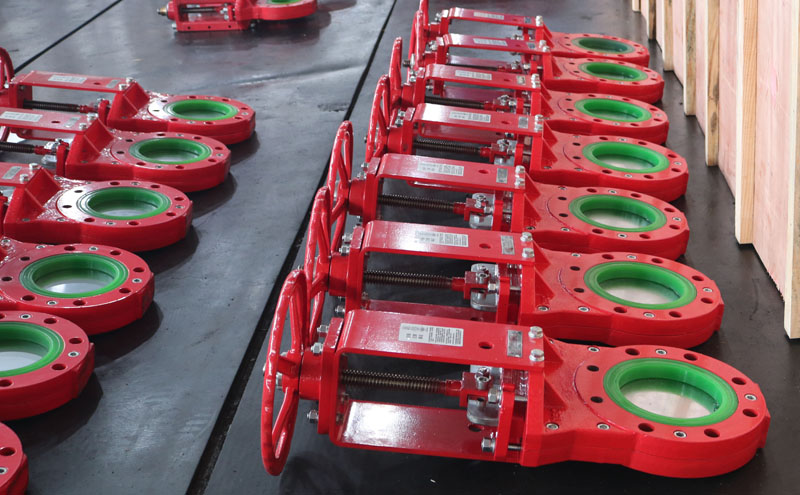What is a Knife Gate Valves
Knife gate valves (KGVs) – also known as slide gate or knife valves – are specialized flow control devices engineered to handle viscous, abrasive, and fibrous media in extreme industrial environments. This guide examines their design, operational principles, and sector-specific applications.
Core Design & Working Mechanism
A knife gate valve employs a sharp, blade-like gate to cut through dense slurries and solids. Key components include:
√ Blade Gate: Wedge-shaped plate (5° angle) shears debris.
√ Sealing System: Metal/elastomer seats ensure zero leakage.
√ Drive Options: Manual, pneumatic, electric, or hydraulic actuation.
Operational Workflow:
→ Closing: The blade descends, slicing through media and compressing against the seat for a bubble-tight seal.
→ Opening: Rapid retraction clears the flow path instantly, minimizing downtime.
Key Performance Advantages
→ Abrasion Resistance: Hardened materials (e.g., polyurethane seats) withstand particulate erosion.
→ Compact Design: Lightweight construction saves space in crowded plants.
→ Zero Leakage: Dual-seal technology for high-pressure/viscous fluids.
→ Low Maintenance: Simplified structure reduces servicing frequency.
→ Bi-Directional Flow: Secures pipelines against backflow.
Industry Insight: Polyurethane-seated KGVs extend service life by 300% in abrasive slurry lines versus rubber seals.
Industrial Applications
Knife gate valves excel where conventional valves fail:
Mining & Minerals:
Slurry transport, tailings management, coal slurry control.
Preferred Solution: Polyurethane-lined KGVs resist silica/sand erosion.
Wastewater Treatment:
Handles sewage with fibers, grit, and solids.
Power Generation:
Fly ash slurry control in coal-fired plants.
Pulp & Paper:
High-density pulp flow regulation.
Oil & Gas:
Crude oil transfer with sand/sediment.
Why Specify Knife Gate Valves
Debris Tolerance: Blade design prevents clogging from rags, wood chips, or rocks.
Hygienic Options: FDA-compliant materials for food/pharma (e.g., dairy processing).
Cost Efficiency: 30% lower lifetime cost vs. ball valves in slurry service.
Selection Guidelines
Abrasive Media: Opt for polyurethane seats (Shore A 95+ hardness).
Corrosive Fluids: Specify 316SS or duplex steel bodies.
High-Cycle Duty: Automated actuators for >100 cycles/day.
Post time: Mar-24-2025







